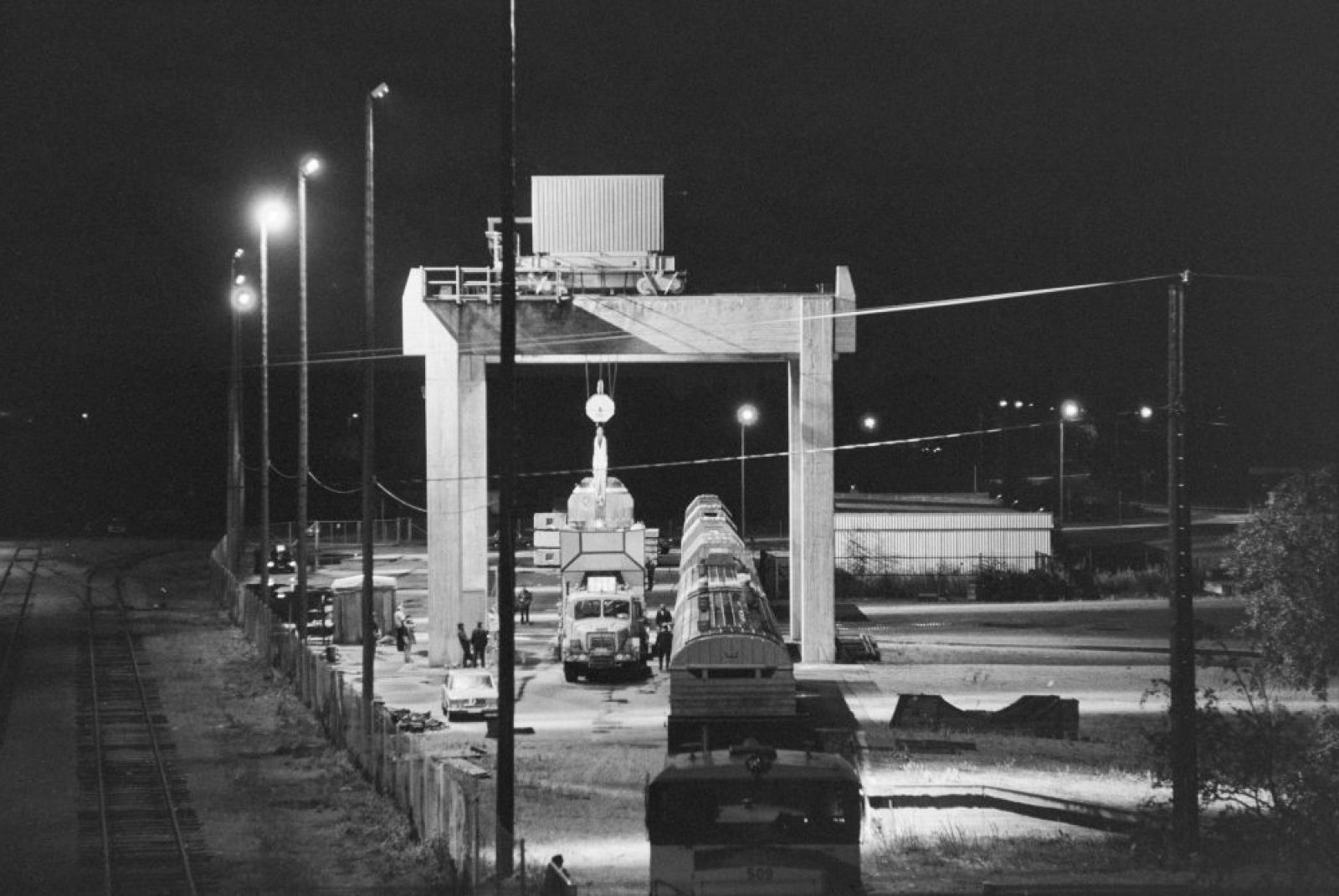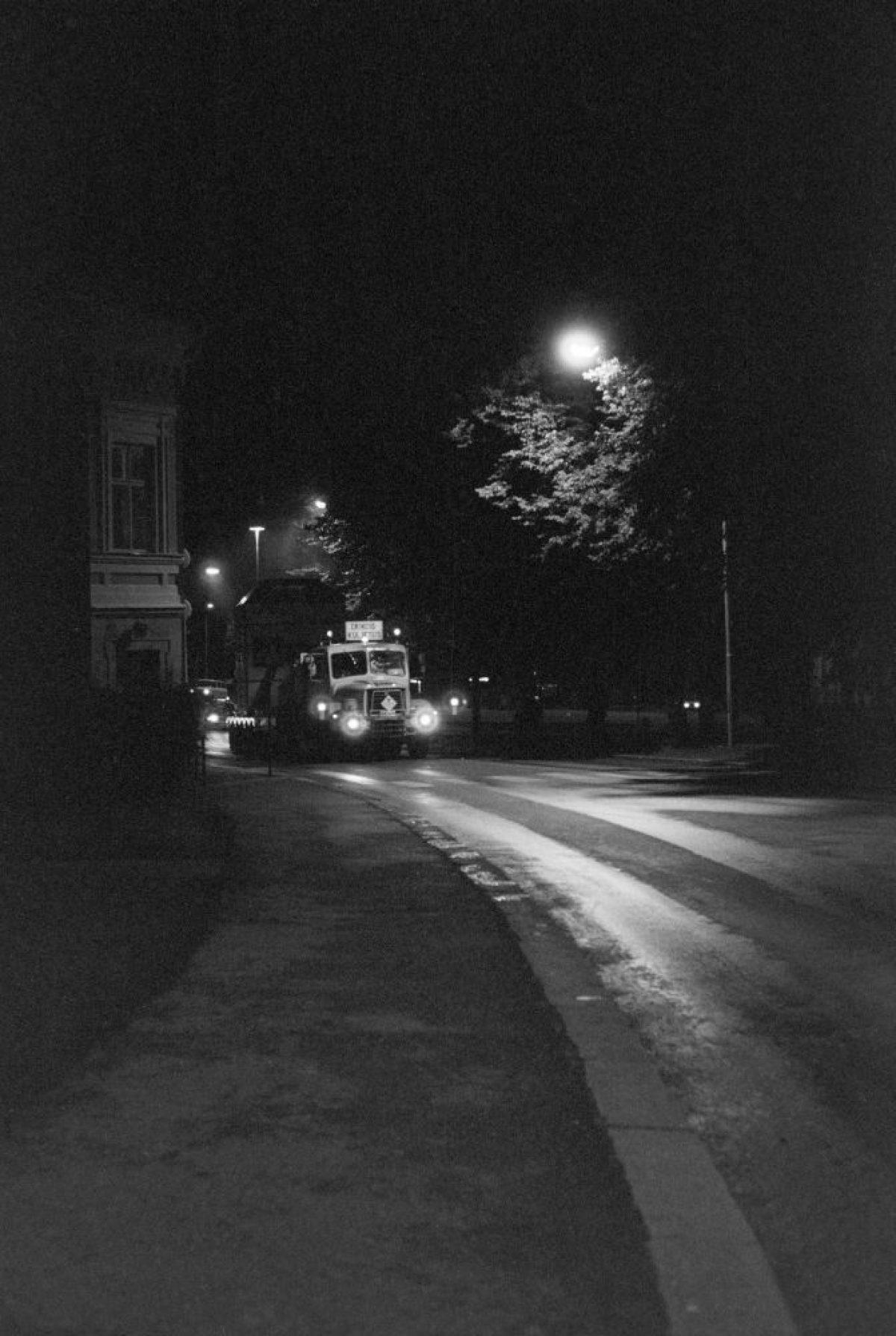
Atomic train on its way to the east
The first shipment of spent nuclear fuel left for the Soviet Union 33 years ago.
The atomic train pulled out of Loviisa railway station on 18 August at ten to seven o’clock in the evening, 33 years ago. The train’s time of departure was a closely-held secret. However, press photographer Lauri Sorvoja had received a tip, and he photographed the first nuclear waste train in Finland on its way to the radioactive waste disposal site in the Soviet Union. The photographs were published in the Ilta-Sanomat newspaper the next day.
The first nuclear power plant in Finland was ordered from the Soviet Union in 1969. Imatran Voima built the nuclear power plant on the island of Hästholmen, at a distance of 16 kilometres from Loviisa. The Loviisa nuclear power plant was completed in 1977. Finland entered the Atomic Age. The question of the final disposal of the spent nuclear fuel had to be resolved. The intention was to return the nuclear waste accumulated at Imatran Voima’s nuclear power plant in Loviisa to the Soviet Union. The first shipment of 14 tonnes of nuclear waste was leaving for the Mayak disposal site in the Soviet Union in the summer of 1981Finland followed the preparations for the dangerous transport with trepidation. The purpose-built carriages arrived from the Soviet Union at the end of July. The nuclear waste was in four containers that were transferred into lorries on the island of Hästholmen. One full container weighed 83 tonnes. The transport schedule was not published. The Helsingin Sanomat newspaper called the departure time of the nuclear waste transport the most closely kept secret in Finland. The media was waiting, and so were the people.
The Ilta-Sanomat reporter Timo Sihvo wrote that the first lorry left Hästholmen on Monday 17 August, at approximately 8 p.m., towards the Loviisa railway station. The photograph by Lauri Sorvoja shows the special lorry driving through the Loviisa city centre in the dark hours of the night surrounded by a police escort. The second photograph shows a nuclear waste container being loaded on the atomic train at the railway yard. The moon is shining.
Imatran Voima and VR did not publish the train’s time of departure. There was more waiting. Adding more suspense to the mix was the track between Loviisa and Lahti, which had been built in the 1920s. The weight limit of the dilapidated track was 17 tonnes: the axle load of the atomic train was 15 tonnes. Curious onlookers gathered next to the track to follow the events. Sorvoja’s photograph shows a group of boys loitering around and waiting for the train to leave.
According to Ilta-Sanomat, the atomic train finally departed from Loviisa railway station on 18 August at 6:50 p.m. Sorvoja photographed the atomic train creeping ahead at a speed of 15 kilometres per hour towards Lahti. The photographs appeared in the next day’s newspaper. The train’s journey continued through Lahti, Kouvola and Vainikkala to Vyborg. The atomic train crossed the state border safely on Wednesday morning.
The last nuclear waste transport from Finland to Russia was carried out in 1996.
The press photographer Lauri Sorvoja from Kotka donated his collection of photographs to JOKA, the Press Photo Archive of the Finnish Heritage Agency, in 2012. The JOKA website includes a video interview, in which Sorvoja talks about the atomic train job.
Raija Linna
Kamera 9/2014

The spent nuclear fuel is transported under police escort to Loviisa railway station. Photo: Lauri Sorvoja / Press Photo Archive JOKA / Finnish Heritage Agency (JOKALS22A:4)